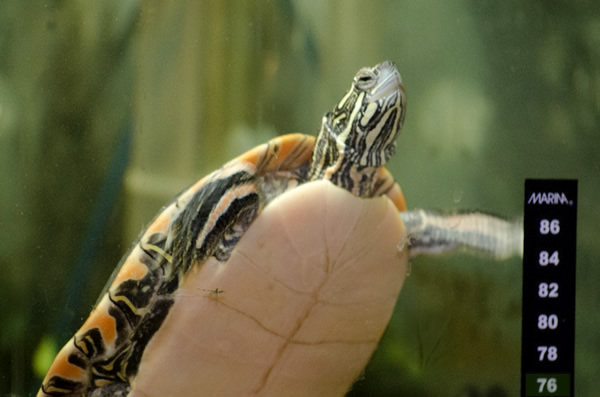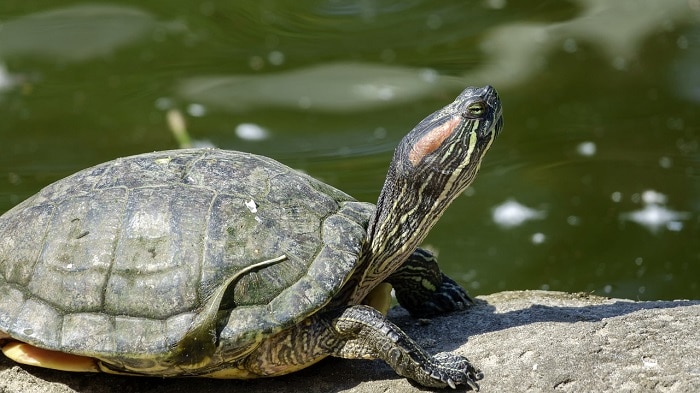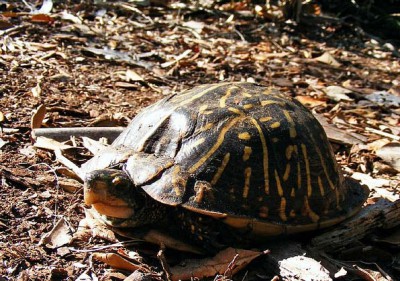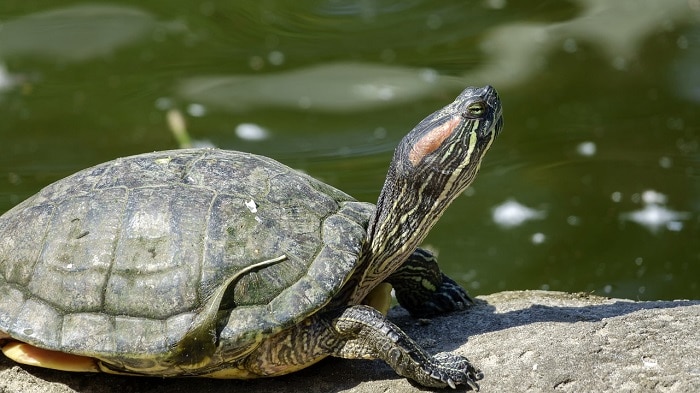If you’re a turtle owner, you know that proper care and maintenance are essential for keeping your shelled friend happy and healthy. One crucial aspect of turtle care is understanding the role of heat and temperature regulation in their overall well-being. Just like us humans, turtles rely on the right amount of heat and temperature to thrive. In this article, we’ll explore the significance of heat and temperature regulation for your turtle’s health, and how you can ensure they are living in the ideal conditions to thrive. So grab a cup of tea and get ready to dive into the world of turtle thermoregulation!
Understanding the Importance of Heat and Temperature Regulation
The physiological needs of turtles
When it comes to maintaining the health and well-being of your pet turtle, heat and temperature regulation play a crucial role. Turtles are ectothermic animals, which means they rely on their external environment to regulate their body temperature. Unlike humans and other mammals, turtles cannot generate their own body heat. Therefore, providing the right temperature conditions for your turtle is essential for its overall health and physiological well-being.
How heat affects turtle metabolism
Heat is essential for promoting the metabolic processes in turtles. The body temperature of a turtle directly influences its metabolic rate, which determines how efficiently it digests food, absorbs nutrients, and utilizes energy. By maintaining an optimal temperature environment, you can ensure that your turtle’s metabolism functions properly, allowing it to grow, thrive, and maintain a healthy weight.
The role of temperature in turtle behavior
Temperature also plays a vital role in influencing the behavior of turtles. Different species of turtles have specific temperature preferences that affect their activity levels, feeding patterns, and even their reproduction. For instance, some turtles are more active and eat more when the temperature is warmer, while others may become lethargic during colder temperatures. By understanding your turtle’s temperature requirements, you can create an ideal environment that promotes natural behaviors and overall well-being.
Providing the Right Environment for Heat Regulation
Creating a suitable temperature gradient
To ensure that your turtle can regulate its body temperature effectively, it’s important to create a suitable temperature gradient within its enclosure. This means providing a range of temperatures from cooler to warmer areas, allowing the turtle to move and find the temperature that best suits its needs. A temperature gradient allows the turtle to thermoregulate by moving closer or further away from the heat source, ensuring it can maintain its body temperature within the desired range.
Selecting the right heat sources
Choosing the right heat sources is crucial for creating a comfortable and safe environment for your turtle. Heat lamps and heat pads are commonly used to provide the necessary warmth. Heat lamps are ideal for replicating the natural sunlight that turtles need for their basking behavior, while heat pads can be placed under the enclosure to warm the substrate. It’s important to select heat sources that are appropriate for the size of your turtle’s enclosure and are capable of maintaining a stable temperature.
Monitoring and maintaining the temperature
Regular temperature monitoring is necessary to ensure that the temperature in your turtle’s habitat remains within the appropriate range. Thermometers or temperature guns can be used to measure the temperature accurately. It’s important to check the temperature in different areas of the enclosure to identify any potential hotspots or cold spots. Make adjustments to the heat sources as needed to maintain a stable and comfortable temperature for your turtle.

The Impact of Heat Regulation on Turtle Health
Preventing respiratory infections
Maintaining the correct temperature in your turtle’s habitat is crucial for preventing respiratory infections. Many turtle species are susceptible to respiratory problems, especially if they are exposed to cold temperatures or drastic temperature fluctuations. Cold temperatures can weaken the turtle’s immune system and make it more susceptible to respiratory infections. By providing and maintaining an appropriate temperature gradient, you can reduce the risk of such infections and promote healthy respiratory function.
Supporting digestion and nutrient absorption
Proper heat regulation is essential for supporting your turtle’s digestion and nutrient absorption. Turtles require warmth to effectively break down their food and extract nutrients. Without the right temperature conditions, the turtle’s digestion can be compromised, leading to issues such as constipation or malnutrition. By ensuring that the temperature in the enclosure is within the optimal range, you can help your turtle properly digest its food and absorb essential nutrients.
Promoting proper immune system function
Maintaining a suitable temperature for your turtle is essential for promoting proper immune system function. Turtles rely on their immune system to defend against infections, parasites, and other health issues. Cold temperatures can weaken the immune system, making turtles more susceptible to various diseases and illnesses. By providing a warm and stable environment, you can help support your turtle’s immune system and minimize the risk of illness.
Temperature-Related Health Issues in Turtles
Heat stress and its consequences
Heat stress is a common health issue in turtles that occurs when they are exposed to excessively high temperatures. Signs of heat stress include increased respiration, droopy or swollen eyes, loss of appetite, and lethargy. If left untreated, heat stress can lead to dehydration, organ failure, and even death. It’s essential to regularly monitor the temperature in your turtle’s enclosure and take immediate action if signs of heat stress are observed.
Hypothermia and its dangers
Hypothermia occurs when turtles are exposed to excessively low temperatures, causing their body temperature to drop below normal levels. This can have severe consequences on their health, including a weakened immune system, slowed metabolism, and respiratory issues. Symptoms of hypothermia in turtles include lethargy, lack of appetite, and prolonged periods of inactivity. If you suspect that your turtle is experiencing hypothermia, it’s important to warm it up gradually and seek veterinary assistance if necessary.
Signs of temperature-related health problems
To ensure the well-being of your turtle, it’s important to be able to recognize the signs of temperature-related health problems. Some common signs include abnormal breathing patterns, changes in appetite, decreased activity levels, and unusual behaviors. In severe cases, turtles may exhibit symptoms such as limb weakness, shell deformities, or shedding issues. If you notice any of these signs, it’s important to take action and seek veterinary advice to prevent further health complications.

Determining the Ideal Temperature Range for Your Turtle
Researching the natural habitat
To determine the ideal temperature range for your turtle, it’s essential to research its natural habitat. Different turtle species originate from various regions with different temperature conditions. By understanding the natural habitat of your turtle, you can create an enclosure that closely replicates its native environment and provides the appropriate temperature range for optimal health.
Species-specific temperature requirements
Each turtle species has its specific temperature requirements to thrive and stay healthy. Some turtles prefer warmer temperatures, while others thrive in slightly cooler conditions. It’s crucial to research and understand the specific temperature preferences of your turtle species to ensure that you provide the best possible environment for its well-being.
Consulting with a veterinarian
If you’re unsure about the ideal temperature range for your turtle or need guidance in creating the right environment, it’s always a good idea to consult with a veterinarian who specializes in reptiles. A reptile veterinarian can provide you with valuable insights and help you tailor the temperature conditions to meet your turtle’s specific needs.
Factors Affecting Heat and Temperature Regulation
Humidity levels and its impact
In addition to temperature, humidity levels can also affect your turtle’s heat and temperature regulation. Many turtles require a certain level of humidity to maintain proper respiratory function and prevent issues such as shell rot. Keeping the humidity within the appropriate range is crucial for ensuring the overall health and well-being of your turtle.
The influence of basking spots
Basking spots play a significant role in a turtle’s heat and temperature regulation. Turtles often bask to elevate their body temperature by exposing themselves to direct heat sources such as heat lamps or sunlight. These basking areas should be carefully positioned within the enclosure and provide a comfortable and safe spot for the turtle to thermoregulate.
The role of UV lighting
UV lighting is another essential factor in promoting heat and temperature regulation for turtles. UVB light is necessary for the synthesis of vitamin D3, which is crucial for the absorption of calcium. Calcium is essential for maintaining strong and healthy shells in turtles. Proper UV lighting, along with the right temperature conditions, ensures that your turtle receives the necessary UVB rays to support its overall health and well-being.

Assessing the Temperature of the Environment
Using thermometers and temperature guns
To accurately assess the temperature of your turtle’s environment, it’s essential to use reliable thermometers or temperature guns. These tools allow you to measure the temperature with accuracy and precision. Digital thermometers are commonly used and can be placed in different areas of the enclosure to monitor temperature variations.
Measuring the temperature in different areas
Measuring the temperature in different areas of your turtle’s enclosure is crucial to provide a suitable temperature gradient. Place thermometers or temperature guns in various locations to ensure that the temperature range covers both the cooler and warmer areas. This way, your turtle can freely move and regulate its body temperature based on its needs.
Identifying hotspots or cold spots
Regularly assessing the temperature in your turtle’s enclosure helps you identify any hotspots or cold spots that may have developed. Hotspots can occur if the heat source is too concentrated in one area, while cold spots may exist if certain areas are not receiving adequate warmth. Identifying these temperature variations allows you to make necessary adjustments to ensure a balanced and comfortable environment for your turtle.
Maintaining Optimal Heat and Temperature Levels
Adjusting heat sources as needed
To maintain optimal heat and temperature levels in your turtle’s enclosure, it’s important to regularly assess and adjust the heat sources as needed. Over time, heat lamps can become less efficient or require replacement, resulting in temperature fluctuations. Keep a close eye on the temperature and monitor the performance of your heat sources. Make adjustments or replace them when necessary to ensure a stable and comfortable heat environment for your turtle.
Modifying the enclosure for better heat retention
Modifying the enclosure can also improve heat retention and help maintain optimal temperature levels. Ensure that the enclosure is properly insulated to prevent heat from escaping. Additional features, such as thermal curtains or heat-reflective materials, can be used to further enhance heat retention. By creating an enclosure that effectively retains heat, you can provide a stabile and comfortable environment for your turtle.
Implementing temperature monitoring systems
To ensure consistent temperature regulation, consider implementing temperature monitoring systems in your turtle’s enclosure. These systems can include automated thermostats that control the heat sources and maintain a steady temperature. Additionally, some temperature monitoring systems can send alerts or notifications to your smartphone in case of any significant temperature fluctuations or failures. These systems provide an added layer of security and peace of mind in maintaining optimal heat and temperature levels for your turtle.

Key Considerations for Outdoor Turtle Habitats
Accounting for seasonal temperature variations
If you provide an outdoor habitat for your turtle, it’s important to account for seasonal temperature variations. Different seasons can bring significant changes in temperature, which may require adjustments in the enclosure or additional heating or cooling measures. Consider using portable heating elements or insulation during colder months and provide shade options during hotter months to protect your turtle from extreme temperatures.
Providing shade and shelter options
Outdoor turtle habitats should include shade and shelter options to protect your turtle from direct sunlight or extreme weather conditions. Natural shade from trees or artificial shade structures should be available to allow your turtle to seek relief from the sun and maintain a comfortable body temperature. Additionally, consider providing shelter options such as hideouts or covered areas to protect your turtle during inclement weather.
Protecting against extreme weather conditions
Extreme weather conditions, such as storms or heatwaves, can pose a significant risk to outdoor turtle habitats. It’s crucial to have plans and preparations in place to protect your turtle during these events. This may include moving your turtle to a more controlled indoor environment, securing the outdoor enclosure, or providing additional heating or cooling measures to ensure the turtle’s safety and well-being.
Recognizing and Responding to Abnormal Heat and Temperature Levels
Identifying signs of overheating or hypothermia
As a responsible turtle owner, it’s important to be able to recognize the signs of overheating or hypothermia in your turtle. Signs of overheating may include excessive panting, extended limbs, clawing at the enclosure, or trying to escape the heat source. On the other hand, signs of hypothermia can include lethargy, immobility, shallow breathing, or a cold touch. If you notice any of these signs, it’s crucial to take immediate action to prevent further health complications.
Taking immediate action in case of emergencies
In case of emergencies related to heat and temperature, it’s important to take immediate action to ensure your turtle’s well-being. For overheating, move the turtle to a cooler area, provide access to fresh water for soaking, and offer cool, moist hiding spots. If hypothermia is suspected, carefully warm the turtle by using a heating pad or warm water bath. It’s crucial to act quickly and seek veterinary assistance if needed to address any severe temperature-related emergencies.
Seeking professional veterinary assistance
If you’re unsure about the severity of a temperature-related issue or if your turtle’s condition does not improve after taking initial actions, it’s essential to seek professional veterinary assistance. A reptile veterinarian can provide a thorough examination, diagnose any underlying health issues, and provide appropriate treatment recommendations to ensure your turtle’s recovery and long-term well-being.
In conclusion, understanding the importance of heat and temperature regulation is vital for maintaining the health and well-being of your turtle. By providing a suitable environment, monitoring temperature levels, and responding to any abnormalities promptly, you can help ensure that your turtle thrives in an environment that supports its natural behaviors, metabolism, and overall health. Remember to consult with a veterinarian and thoroughly research the specific temperature requirements for your turtle’s species to provide the best care possible.

